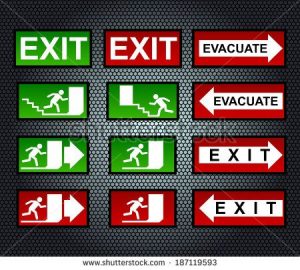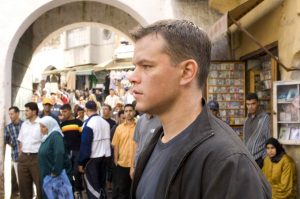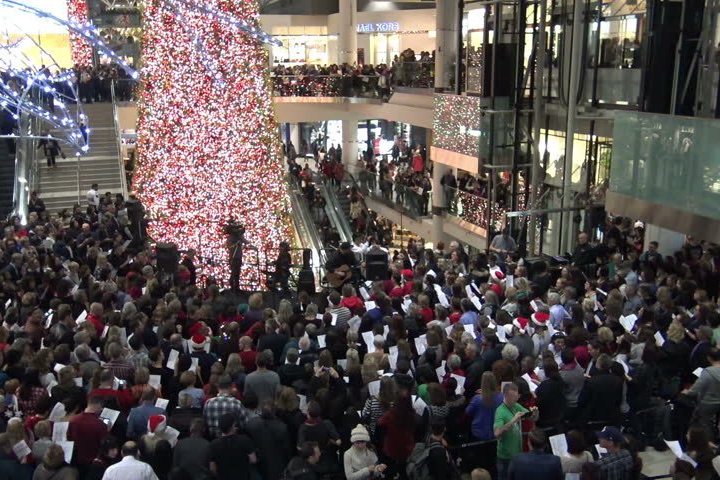
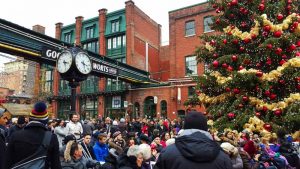
As the holiday season approaches, we will invariably be heading out more often to places rife with people. Be it for shopping, get-togethers, enjoying a crisp winter walk or seeing a festive event, the holiday season brings more and more people out for all these reasons and more.
Large groups of people gathered together tend to cause problems relating to safety and security. They increase the risk of conflict between people in those large groups, they make inviting targets for those who would wish to cause harm (i.e. bad guys) and the larger the group of people in a building, the more difficult and time-consuming it is to get those people out safely, especially under panic.
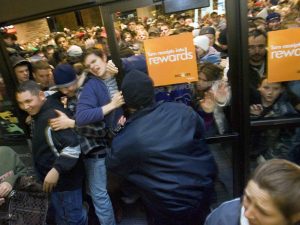
Examples of these would be as follows: anytime there is one last toy of a particular kind and a fight breaks out; fights over parking spots at malls, etc. These types of events may or may not be directly involving you, but have the potential to rope you in if you’re not paying attention. Another is an active shooter (such as the Jane Creba shooting in Toronto) where something like gang violence occurs and innocent bystanders are caught in the middle. And then there are times when a machete-wielding lunatic attacks random shoppers, or some fanatic decides to plough down people walking down the street with a truck. And then there’s fire. Nothing nefarious, but deadly nonetheless. They happen. Use all your senses to stay aware. None of these are predictable in a useful sense for someone heading out for a day of shopping at the mall. They just happen.
For the interactions that escalate, I would recommend to let it go. Is some hot-head nut case really worth that parking spot? Likely not. However, this doesn’t mean I advocate not protecting yourself if someone attacks you.
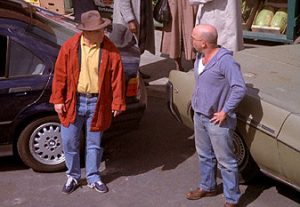
For the rest, they are “black swan events” which you have to deal with as they unfold.
Here are my thoughts on how to increase your chances of survival in crowded locations in times of danger.
- Keep an eye open for viable exits: as you enter malls, concert halls or crowded public spaces, keep an eye on ways out. Be it a fire or an attack, having a pre-planned escape route can save valuable seconds getting out and saving yourself and likely others. Better yet, if you’re there a while, hang out near the exits. You’ll be better positioned to get out should something happen. Also, if in a mall, take the stairs instead of the escalators. If you have to move in a hurry you have a better position to move from as those on the escalator are trapped in the chute.
- Keep moving: Staying still doesn’t help you much in a time of crisis. If you’re still, you’re an easy target, you’re not moving away from danger and you’re not able to affect change to your circumstance, thus handing all the control to others (i.e. bad guys). Move towards an exit, move to cover, move to a fire extinguisher…just MOVE! Be a difficult target. Movement is Life. In large crowds, most people will attempt to exit the way they came in. This can cause a stampede-like effect where people get trampled and crushed. A wave of humanity which is large and panicked cannot be forced. Instead, take the better approach and aim for one of your pre-scouted exits instead.
- In the case of an active shooter – TAKE COVER: That’s right. as you move, move from one place of cover to another until you exit and create time and distance between you and the threat. Cover is something that offers ballistic protection (i.e. protection from bullets). This is cement and concrete. Furniture, vehicles and the like don’t provide adequate protection from bullets. Stone, rock, thick steel and cement do. Look for pillars, walls and the like to save you.
- Be aware of your surroundings: Use all of your senses. If a fire breaks out, you’ll likely have an indication before you see it because of smell. Move to an exit. When in a crowd, get a sense of the general “feel” of the environment. Stay at the edges of crowds. Look for people who don’t look or “feel” like they belong in the same group. Situational Awareness is your early warning system for something bad happening. It’s not meant to cultivate paranoia, it’s meant to cultivate awareness for whats going on around you so you have a chance to ACT before being acted upon.
- Keep Essentials on you: Your personal Every-Day-Carry should be on you at all times. A small knife, multi-tool, lock picks, lighter, cash, cell phone (charged), mini flashlight, some cordage, etc. can help you get out of a tough situation should you need it.
To sum up remember these key points:
- Be Aware (of your environment)
- Be prepared (with a viable EDC setup)
- Identify Exits (note escape routes)
- Keep Moving (movement is life)
- Take Cover (behind concrete or stone)
- Better yet, order online and stay home.
In closing, before you head out, switch on. Enjoy yourself and have fun, but always remember that by being aware you are fore-warned and fore-armed. Always have an escape plan.
Be safe. Stay crafty.

